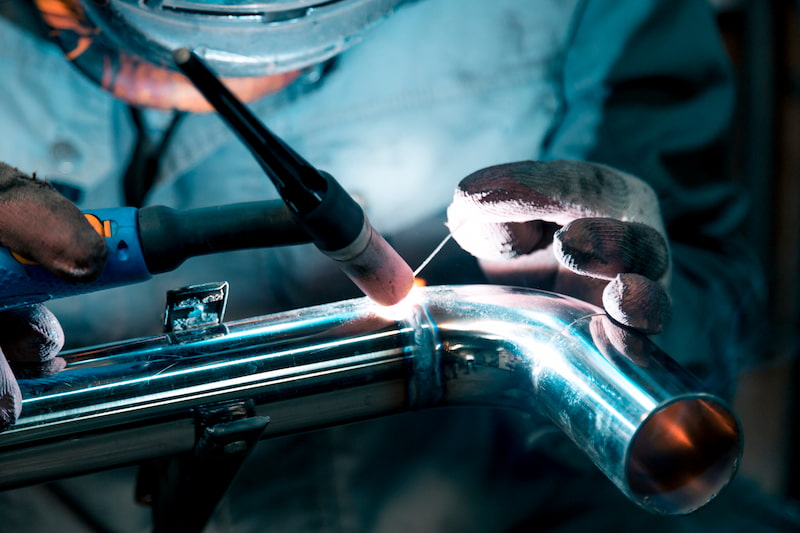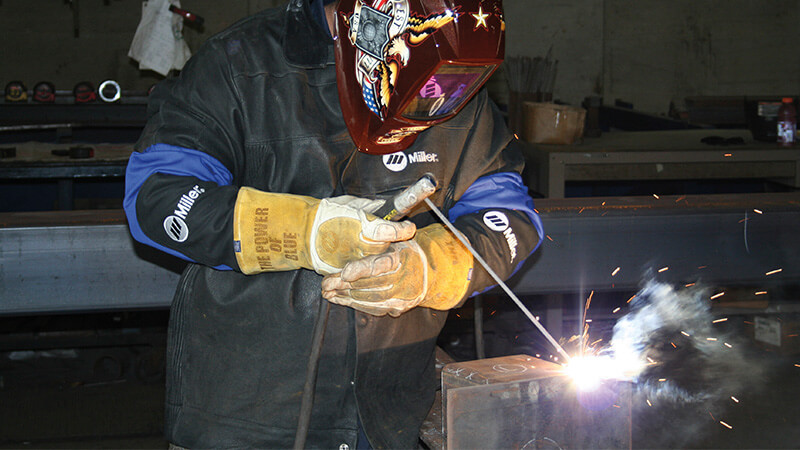Common Welding Repair Work Issues and How to Address Them Effectively
Welding repair work usually experience an array of concerns that can endanger the honesty of the end product. Common problems consist of poor infiltration, porosity, and imbalance, to name a few. Each defect provides special obstacles that require details methods for resolution. Recognizing these problems is crucial for welders aiming to enhance their skills and end results. This discussion will certainly explore these common welding repair work problems and effective methods to address them.
Inadequate Infiltration
Inadequate infiltration takes place when the weld steel fails to totally fuse with the base product, resulting in weak joints and possible structural failures. This concern often originates from not enough heat input, incorrect electrode angle, or inappropriate welding rate. Welders may run into poor penetration due to a mistake of the essential specifications for a details material thickness or kind. Additionally, contamination on the base material's surface can prevent effective bonding, worsening the problem. To attend to inadequate penetration, welders ought to ensure proper settings on their equipment and keep a clean job surface. Normal evaluation of welds is suggested to recognize any deficiencies early, permitting prompt improvements and the prevention of jeopardized architectural honesty in welded settings up.
Porosity
Porosity is a typical issue in welded joints that shows up as little gas bubbles caught within the weld metal. This issue can endanger the honesty of the weld, causing minimized toughness and potential failing under stress and anxiety. Montana Mobile Welding and Repair Belgrade. Porosity generally occurs from contamination, wetness, or incorrect welding strategies, which allow gases to get away into the liquified weld pool. To deal with porosity, welders should guarantee appropriate surface area preparation, preserve a tidy workplace, and utilize ideal welding specifications. Furthermore, picking the right filler material and protecting gas can mitigate gas entrapment. Routine evaluation and testing of welds can help determine porosity early, assuring timely corrective activities are taken, thereby preserving the quality and dependability of the bonded framework
Misalignment
Misalignment in welding can develop from different elements, including improper setup and thermal growth. Understanding the origin is crucial for efficient resolution. Several modification strategies are available to realign components and guarantee architectural stability.
Reasons for Misalignment
Welding imbalance commonly originates from a selection of underlying problems that can endanger structural stability. One main cause is improper fit-up of components prior to welding, which can cause gaps and unequal surface areas. Variations in thermal growth throughout the welding procedure can additionally lead to distortion, particularly if the products being signed up with have various coefficients of growth. Additionally, insufficient securing and fixturing might fail to hold parts securely in location, causing movement throughout welding. Poorly kept tools, consisting of welding machines and devices, may introduce incongruities in the weld grain, more contributing to imbalance. Ultimately, driver mistake, stemming from insufficient training or experience, can likewise play a substantial role in producing misaligned welds.
Adjustment Strategies Readily Available
Resolving imbalance successfully needs a mix of corrective strategies customized to the details problems at hand. One common technique is the use of fixtures or jigs to hold components in the proper position throughout welding, ensuring regular placement. In addition, preheating the materials can help in reducing distortion and improve fit-up. For substantial imbalance, mechanical adjustment techniques, such as making use of hydraulic jacks or clamps, can be utilized to fix the placement before welding. Post-weld warm therapy might likewise be essential to soothe tensions brought on by misalignment. Mindful examination and adjustment during the arrangement stage can avoid imbalance concerns from coming to be significant issues, promoting a smoother welding procedure and boosting total architectural stability.
Distortion
Distortion is a typical obstacle in welding that can occur from numerous elements, consisting of unequal cooling and heating. Comprehending the reasons for distortion is crucial for implementing efficient prevention strategies. Addressing this issue not just improves structural stability yet also boosts the total top quality of the weld.
Reasons of Distortion
When subjected to the intense warmth of welding, products typically undertake changes that can result in distortion. This sensation primarily emerges from thermal growth and contraction during the welding process. As the weld area warms up, the product broadens; upon cooling, it gets, which can produce interior stresses. Furthermore, irregular heating across a workpiece can worsen these tensions, causing bending or bending. The kind of material additionally plays a substantial function; steels with varying thermal conductivity and coefficients of expansion may respond differently, bring about unpredictable distortions. Additionally, inadequate joint style and insufficient fixturing can add to imbalance during welding, enhancing the likelihood of distortion. Understanding these reasons is crucial for efficient welding repair service and avoidance techniques.
Prevention Techniques
Efficient prevention strategies for distortion throughout welding emphasis on managing heat input and ensuring appropriate joint style. Keeping a consistent warmth input assists to minimize useful site thermal development and contraction, which can bring about distortion. Making use of techniques such as pre-heating the workpiece can additionally reduce the temperature slope, advertising consistent heating. Furthermore, selecting ideal joint styles, such as T-joints or lap joints, can boost security and lower tension focus. Implementing proper fixturing to safeguard the workpieces in position further aids in preserving alignment during the welding procedure. Staggered welding sequences can distribute warm more evenly, stopping local distortion. By applying these methods, welders can significantly lower the Continued likelihood of distortion and boost the general high quality of their welds.
Splitting
Fracturing is an usual concern encountered in welding repair work, often arising from numerous variables such as inappropriate cooling prices, product selection, or insufficient joint prep work. The occurrence of splits can greatly compromise the integrity of the weld, resulting in potential failures during operation. To resolve this problem, welders need to initially assess the source, ensuring that materials work and properly selected for the specific application. Additionally, managing the air conditioning price throughout the welding procedure is vital; rapid cooling can induce stress and anxiety and result in breaking. Correct joint style and preparation additionally contribute to reducing the threat. Executing these techniques can enhance weld quality and resilience, inevitably decreasing the chance of breaking in finished weldments.

Incomplete Combination
A substantial concern in welding fixings is incomplete blend, which occurs when the weld metal does not properly bond with the base material or previous weld passes - Welding. This problem can cause weaknesses in the joint, possibly endangering the integrity of the welded framework. Aspects adding to insufficient fusion include insufficient warmth input, incorrect welding technique, and contamination of the surfaces being signed up with. To address this problem successfully, welders ought to assure appropriate pre-weld cleaning and surface prep work, in addition to readjust their welding criteria to achieve sufficient penetration and combination. Routine assessment throughout the welding process can additionally help identify incomplete blend early, allowing for timely rehabilitative measures to enhance the total quality of the weld
Overheating
While welding repair work can boost structural stability, overheating offers a significant obstacle that can lead to material deterioration. Excessive heat during welding can change the mechanical residential properties of metals, leading to reduced strength, raised brittleness, and warping. This phenomenon is especially essential in high-stress applications where structural reliability is extremely important. Recognizing getting too hot can include visual examinations for staining or distortion, along with keeping track of temperature level throughout the welding procedure. To minimize the risks linked with overheating, welders must use appropriate techniques, such as controlling warmth input, readjusting traveling speed, and using ideal filler materials. Furthermore, applying pre- and post-weld heat treatments can assist bring back product residential or commercial properties and improve the general quality of the repair, ensuring lasting efficiency and safety and security.
Regularly Asked Concerns
What Are the Usual Signs of a Welding Defect?

Just How Can I Test My Welds for Top quality?
To examine welds for high quality, one can use metal man welder visual evaluations, ultrasonic screening, and radiographic approaches. Each technique guarantees structural honesty, recognizes defects, and verifies adherence to defined criteria, inevitably improving the integrity of the bonded joints.
What Safety Preventative Measures Should I Take While Welding?
When welding, one ought to focus on safety by putting on ideal individual safety tools, guaranteeing correct air flow, safeguarding flammable materials away, preserving a tidy work area, and knowing surroundings to stop injuries and accidents.
Can I Repair a Weld Without Redesigning the Entire Joint?
Repairing a weld without remodeling the entire joint is feasible, depending on the damages (Belgrade Welding). Strategies such as grinding, adding filler product, or utilizing a welding procedure can effectively deal with specific defects while maintaining the surrounding structure
What Devices Are Necessary for Reliable Welding Services?
Important tools for reliable welding repair services consist of a welding machine, wire brush, grinder, safety equipment, clamps, and filler products. Each device plays an important duty in guaranteeing top quality and safety throughout the fixing procedure. Porosity commonly occurs from contamination, moisture, or incorrect welding techniques, which enable gases to escape right into the liquified weld pool. Improperly conserved devices, including welding makers and tools, might introduce incongruities in the weld grain, more contributing to misalignment. When subjected to the extreme warm of welding, materials frequently undergo modifications that can lead to distortion. Breaking is an usual problem run into in welding repair services, frequently resulting from numerous elements such as inappropriate cooling rates, material selection, or poor joint prep work. A substantial problem in welding repairs is incomplete fusion, which happens when the weld steel does not sufficiently bond with the base material or previous weld passes.
Comments on “Major welding defects and their fixes by Montana Mobile Welding and Repair Belgrade Fabrication”